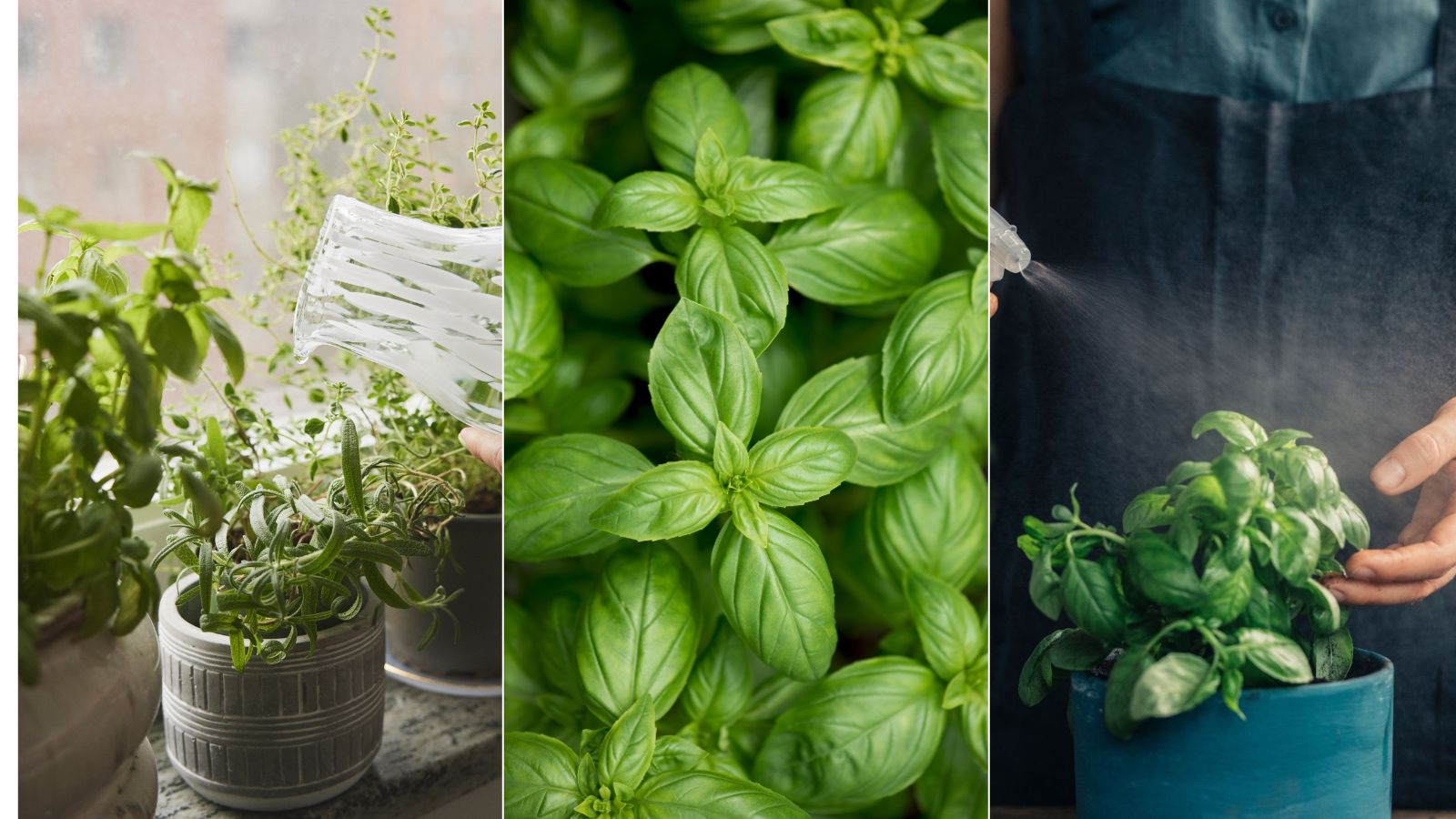
Knowing how often to water your basil plant is important for keeping this herb healthy.
The key to properly hydrating basil is to strike a balance between under- and over-watering it, and this can depend on a range of factors, from the container it's in to its position indoors or out. In other words, it's not a one-size-fits-all approach.
We asked gardening experts for tips on how regularly to water a basil plant so that if you're growing basil, you get a long-lived, aromatic plant.
How often to water basil? Signs to look for
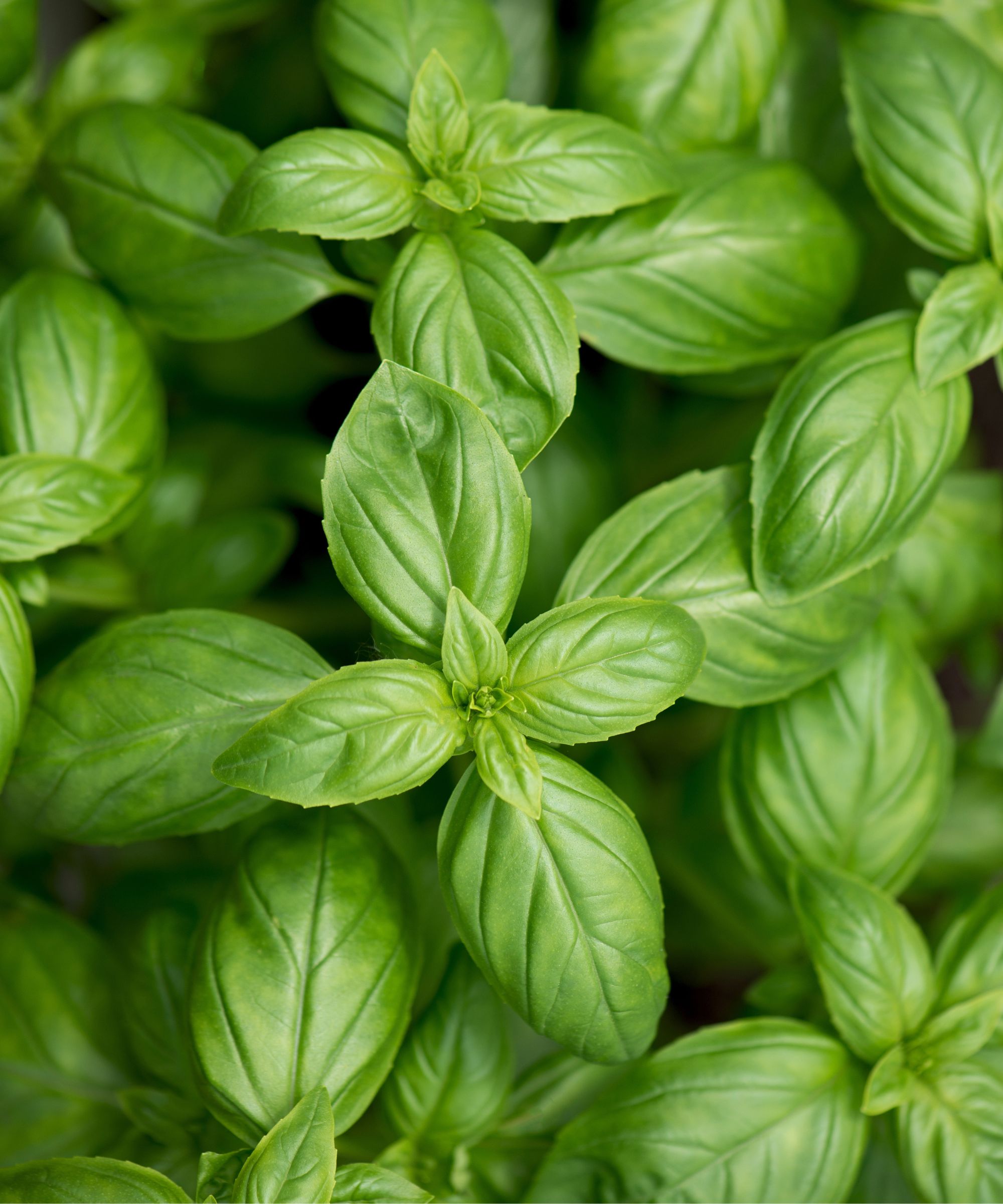
How regularly you water your basil depends on a few factors:
Its location
'Each garden and location can have unique variables affecting watering needs. By observing your basil plant closely and monitoring soil moisture levels, you can fine-tune the watering routine to suit your specific environment and basil varieties,' says Robin Phelps, Gardening and Preserving Coach at Sow Many Plants.
The soil
Tony O'Neill, gardening author and the creator of Simplify Gardening advises, 'The frequency of watering basil depends on several factors, such as the weather, the stage of growth, and the type of soil it's planted in.
'Generally speaking, basil should be watered when the top 1 to 2 inches of soil feels dry to the touch.' This is typically around once every one to three days in the summer months when the weather is warm and dry. Watering may be reduced to once a week or once every 10 days in cooler or rainy periods.
The time of day
Tony continues, 'Another tip to keep your basil plant thriving is to water it in the morning. This allows any excess water on the leaves to evaporate in the sun, reducing the chance of fungal diseases.
'Remember, every garden and climate is unique, so paying attention to your basil plant's signals is essential. Yellowing leaves, for instance, can be a sign of overwatering.'
How to know when your basil needs watering
To know when your basil needs watering, beyond following our guidance on how often and how much to water it, you should be able to work it out by sticking your finger in the soil and seeing how dry the soil is.
Ryan Farley, the CEO of LawnStarter advises, 'Basil is a plant that prefers soil to stay moist, so it's important not to let soil dry out completely between waterings.'
So if you can't feel any moisture, then it's time to water the herb since the soil should stay consistently moist to keep the plant healthy.
You may need to place your finger a bit deeper than surface level, since the moisture is likely to be retained a bit lower in the soil, nearer the plant's roots, but as long as the top 1 to 2 inches of the soil is dry then you should water it. Do this to make sure the plant isn't already well hydrated since you don't want to overwater your basil.
Alternatively, John Thomas, owner of Back Garden Geek, recommends, 'If you notice that the surface of the soil is dry, don't water your plants immediately. Instead, use a soil moisture meter to see whether the soil beneath the surface is dry as well.'
We recommend this soil moisture meter, a best seller at Walmart.
Robin Phelps, Gardening and Preserving Coach at Sow Many Plants suggests, 'Basil generally prefers consistently moist soil, but it's essential to avoid waterlogging. As a general guideline, aim to water basil when the top inch of soil feels slightly dry to the touch. This allows the roots to access moisture while ensuring adequate drainage.'
John Thomas warns, 'You can easily overwater basil plants if you don't pay attention to the soil's moisture levels.'
You will also know when your basil needs to be watered when the plant looks droopy or your basil is wilted.
How regularly to water your basil based on its size
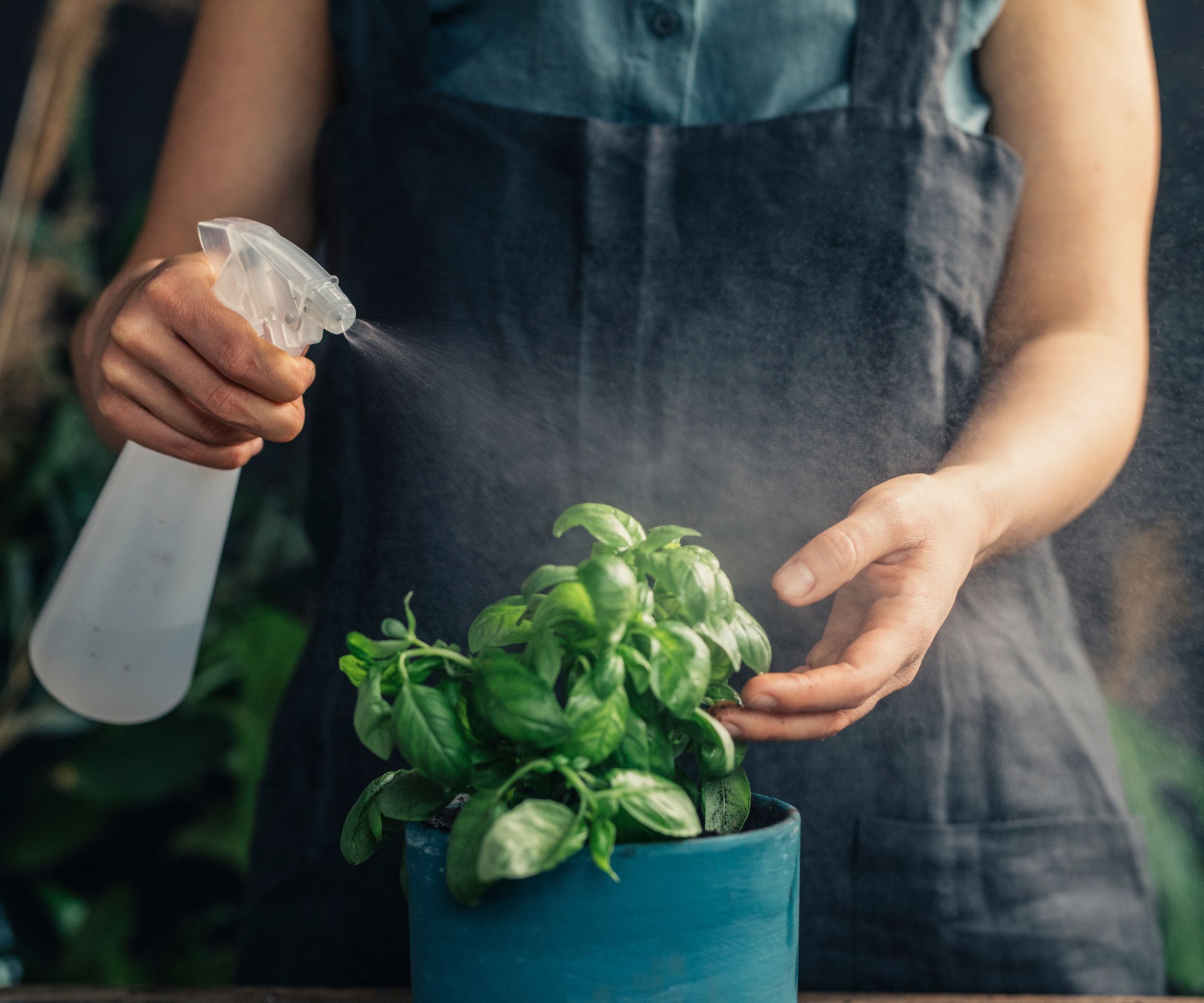
A mature basil plant needs around 1 inch of water per square foot, once a week.
Young basil seedlings don't need as much water as mature basil, since they can be drowned more easily. A seedling basil plant make do with about half the amount a mature basil can. Make sure the plant's soil stays moist, but also don't let it get soggy. For basil that's sprouting, you can use a plant mister to keep the top layer of the soil moist. We recommend the hula home spray bottle from Amazon.
How often to water basil in containers or pots
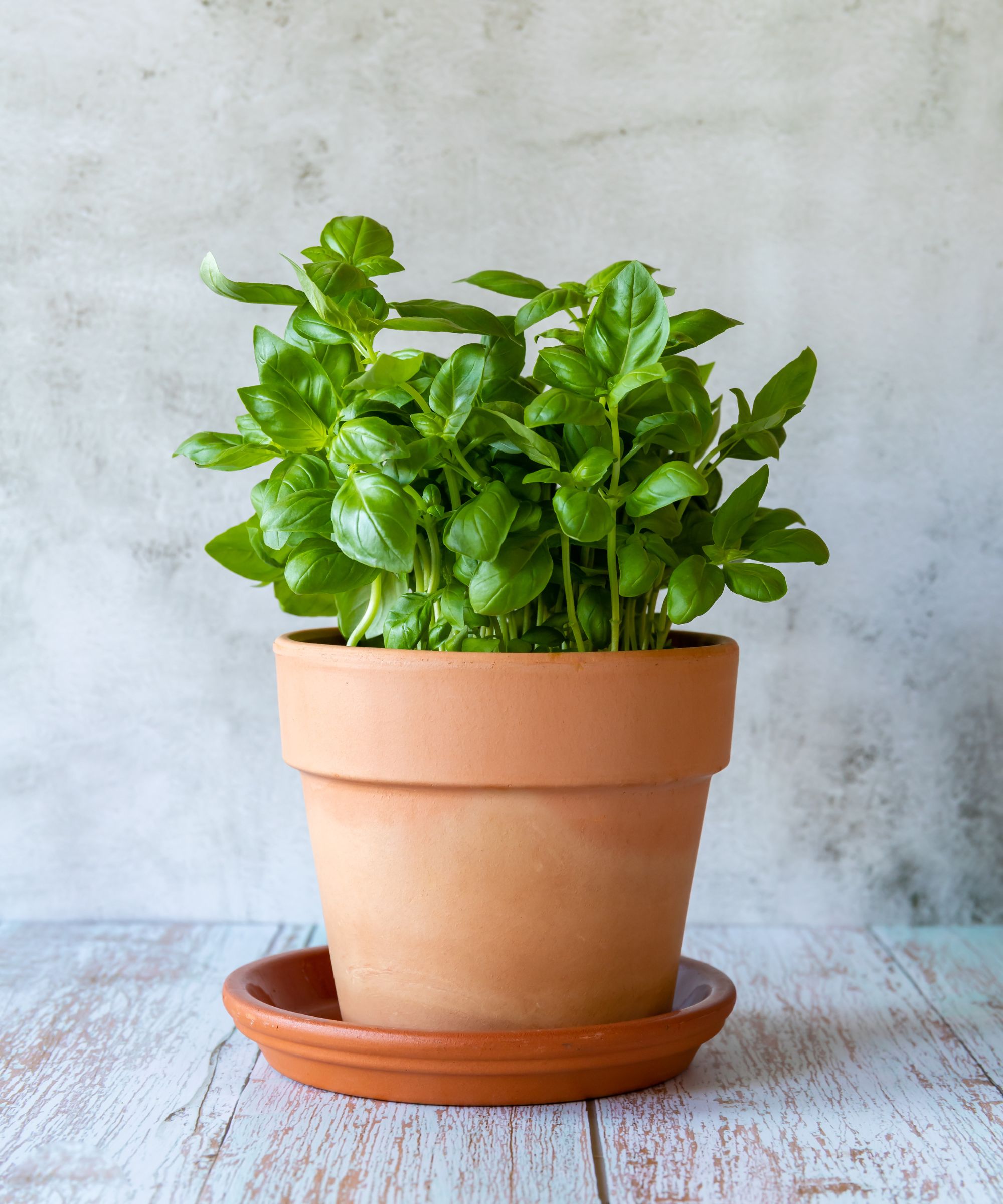
Basil growing in containers require more regular watering than garden-growing basil.
There are a number of reasons why this can be the case. For one, soil in smaller pots or containers dries out faster than in larger ones due to the limited amount of soil.
Another reason for this is that in smaller pots, the soil receives less sun exposure since the basil leaves shield the soil from rainfall, meaning less water naturally makes its way into the soil and to the roots of the plant. This means you can't rely on rain to water your plant in the same way you can in large plant beds.
Other factors that lead soil to dry out faster include the type of pot the basil is growing in. Pots made from porous materials, like terracotta, will cause some water to escape, leading the soil to dry more quickly.
Ryan Farley, the CEO of LawnStarter, suggests, 'You should plan on watering basil outdoors or in larger pots once a week, and water enough that you see water leaking from drainage in the bottom of the pot. For smaller containers, you may need to water every three days or so.'
How much to water basil growing inside
Another factor that influences how much to water your basil is how much soil your basil plant is in. Lindsay Etemadipour, a herbalist and founder of Drink Symbi advises from her personal experience: 'We use basil daily in the kitchen so I have a pretty big basil plant that sits in its own bed that is about 20 inches diameter. I give it about 3 inches of water each week, every one to two days. If your plant is inside, you will want to tamper the watering, only watering it every four days or so.'
How frequently to water your basil based on the soil it's in
If your basil is planted in sandy soil, it will require more frequent watering than basil in clay soil.
If you have some compost, this can be combined with the potting soil to prevent it becoming dehydrated as rapidly.
You may also want to use expert gardener water soluble fertilizer, from Walmart, every fortnight, to ensure your basil gets extra nutrients to keep it healthy.
How much to water your basil based on the weather
In hotter temperatures, the soil your basil is growing in is likely to dry up faster due to evaporation, which can cause the plant to suffer since it won't be getting the amount of water it needs. Try to monitor the soil moisture more regularly when it's hot in case the basil needs a more regular watering.
How to ensure your basil is making the most of the water
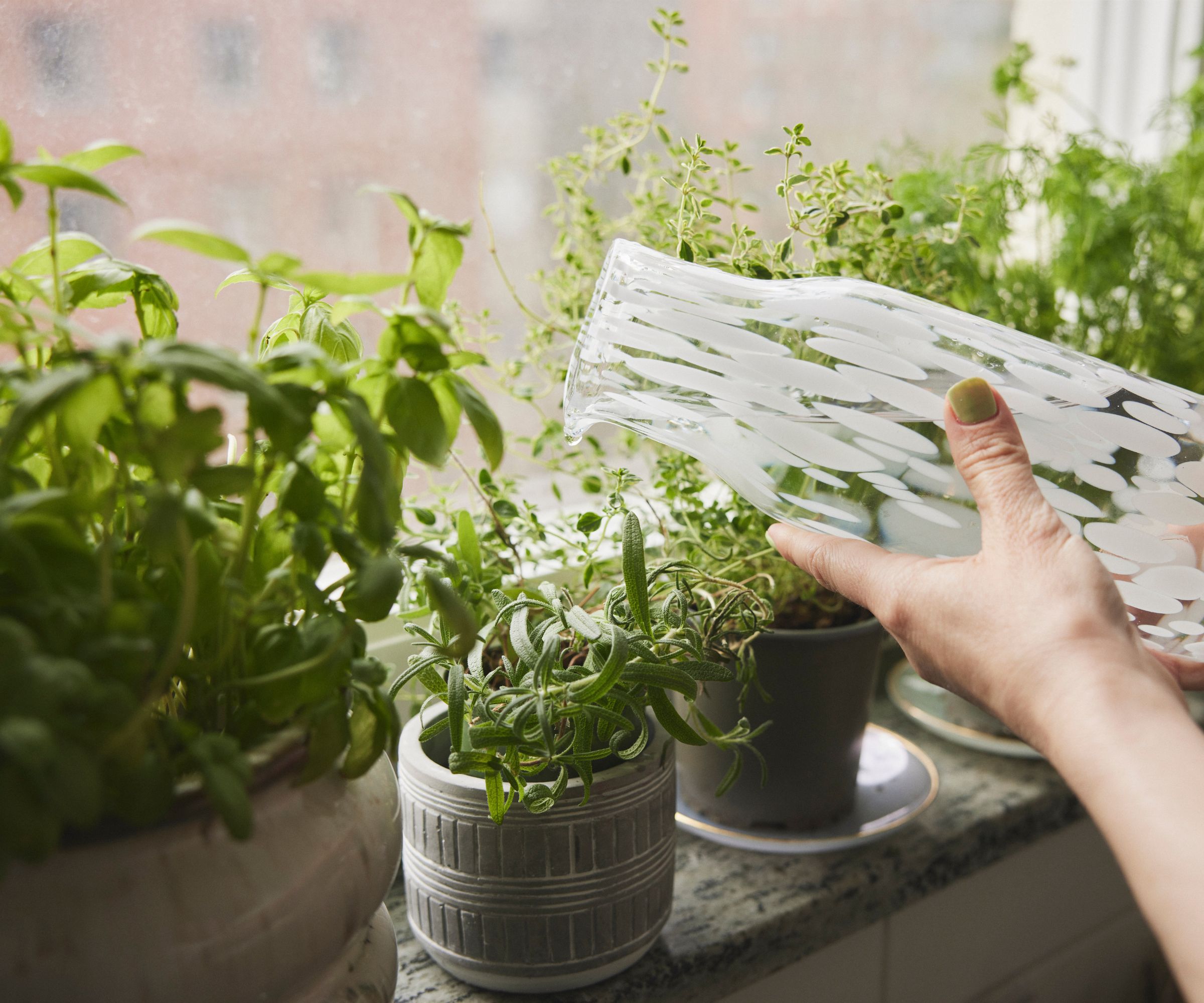
To make sure your basil plant is making the most of the water it's given, ensure you water the plant deeply so the soil is fully moistened and to promote stronger roots.
To prevent your basil's roots from drying out as fast, which may be especially handy if you are going on vacation for a couple of weeks and won't be able to water your plant as regularly, then you can add a layer of mulch to the plant's roots. This can mean using straw, shredded leaves, grass cuttings. This protective layer should reduce moisture loss.
John Thomas, owner of Back Garden Geek, suggests, 'To help your soil retain as much moisture as possible, place 2 to 3 inches of wood chips or mulch all around your basil plants. The thicker the layer, the more moisture it will retain, so be sure to mulch around your plants as much as possible. This is especially important during summer since the hot sun will dry the soil and stress out your plants.'
It's important to avoid watering the leaves of your basil since this can increase the risk of your basil getting fungal diseases. Yet another reason to water the base of the plant and soil.
'Another tip that will help your basil plant thrive is watering it in the morning; that way it will have soaked up the water by the time night falls. So even if its humid out, you won’t risk disease', suggests Lindsay Etemadipour, a herbalist and founder of Drink Symbi.
FAQs
Can you overwater your basil?
Yes, you can overwater your basil, which can lead to root rot, and cause the basil leaves to wilt or turn yellow. However, it may surprise you to hear that basil doesn't becomes overwatered when it is given too much water at once, but when it is watered too regularly.
Tony O'Neill gardening author and the creator of Simplify Gardening says, 'Basil is a Mediterranean herb that prefers well-drained soil and does not appreciate water-logged conditions. Overwatering can lead to a condition called root rot, which can damage or even kill your basil plant. That's why adjusting your watering to the plant's needs is important rather than sticking to a rigid schedule.'
To avoid this, ensure there is no water sitting under the plant, for example, if you are growing the basil in a container or have a saucer under your plant.
Bryan Clayton, Founder of GreenPal advises, 'Basil plants prefer a well-drained soil. This type of soil structure ensures that water does not sit around the roots for extended periods, which could also lead to root rot.'
You can aerate the soil, which is where you can use a weeder tool to make air holes and twist the tool to create air passages and loosen the soil around your basil. By doing this more air can get into the root system to dry them out. This can help you to avoid suffocating your plants.
Watering your basil the right amount is important for not only the plant's health. 'It also impacts basil's aromatic and flavorful qualities. Maintaining optimal hydration levels promotes the development of essential oils, intensifying the taste and fragrance of the leaves', says gardening expert Robin Phelps.
Creating a quick checklist of the temperature, whether your basil is inside or outside, what kind of soil it's growing in, its size and age, and where it is growing (potted or not) can help you to work out what amount of watering will be perfect for your plant. That way, when it comes to harvesting basil, you can be sure of the tastiest of results.







